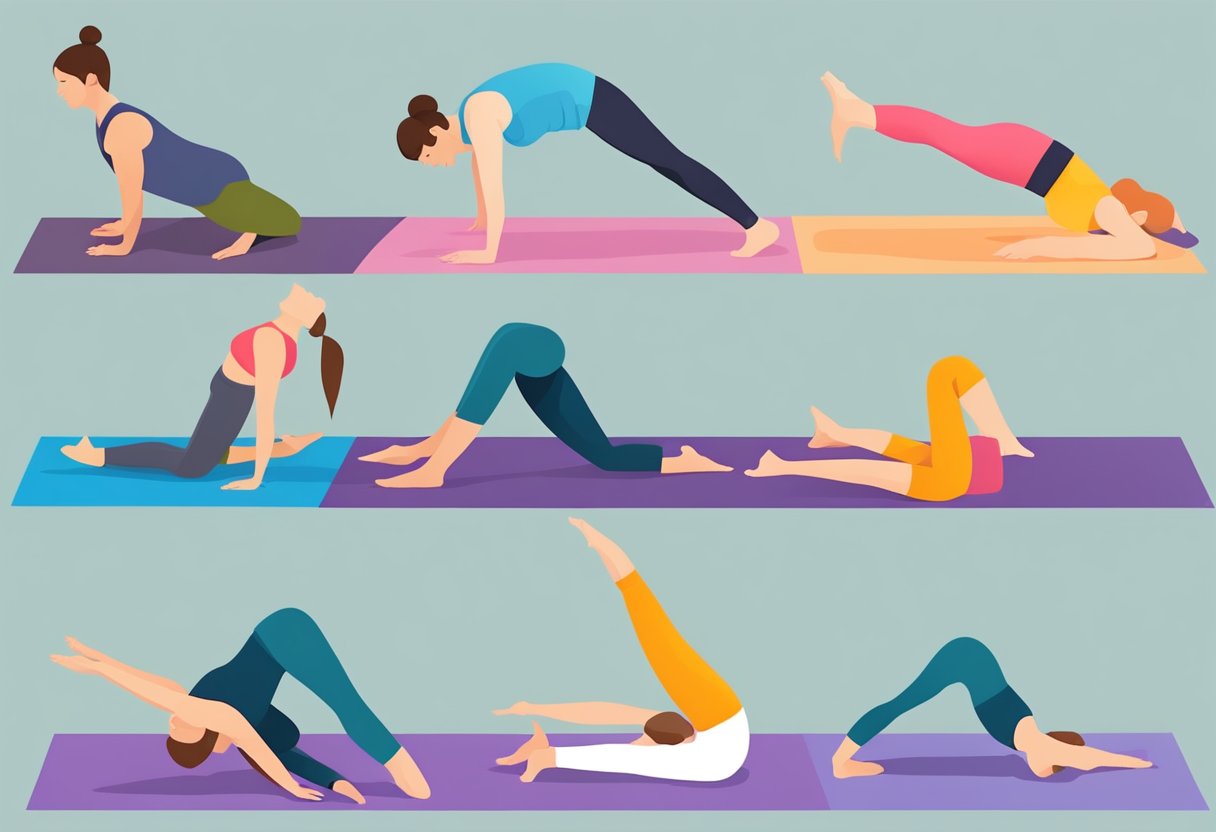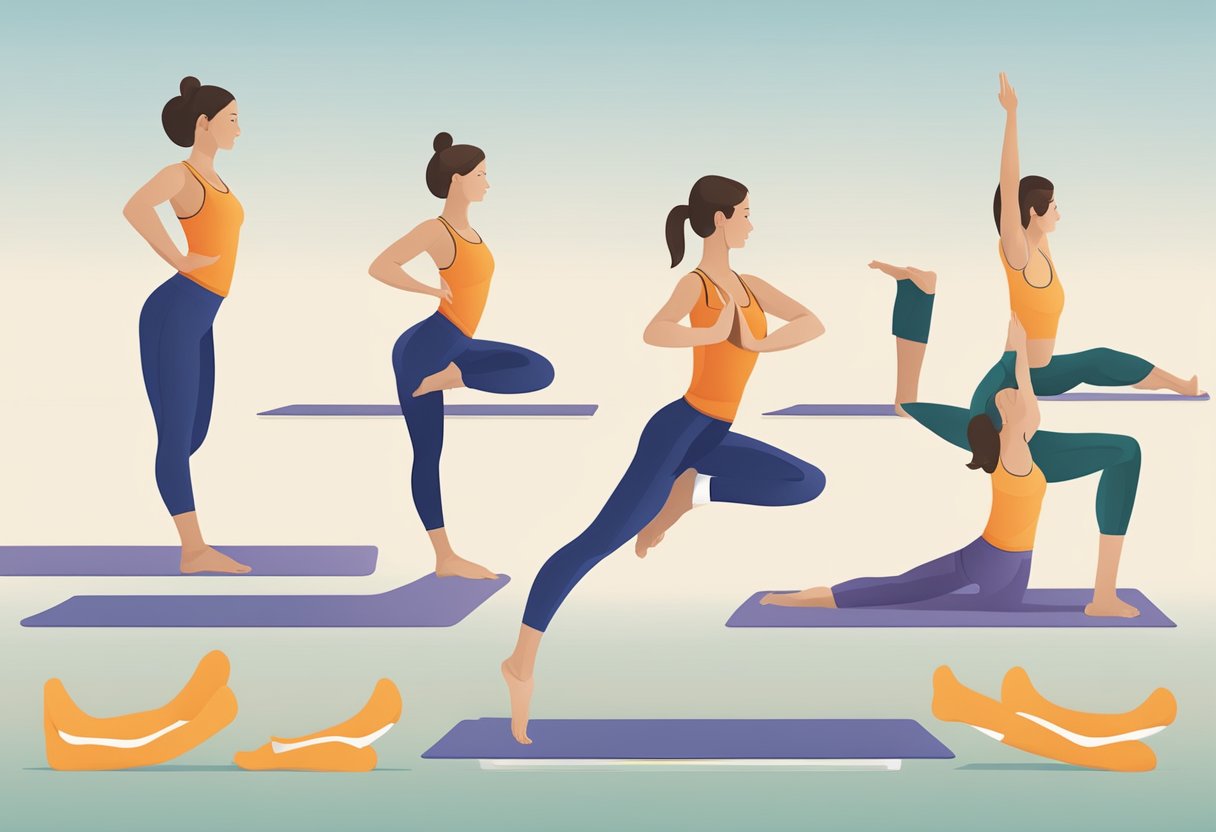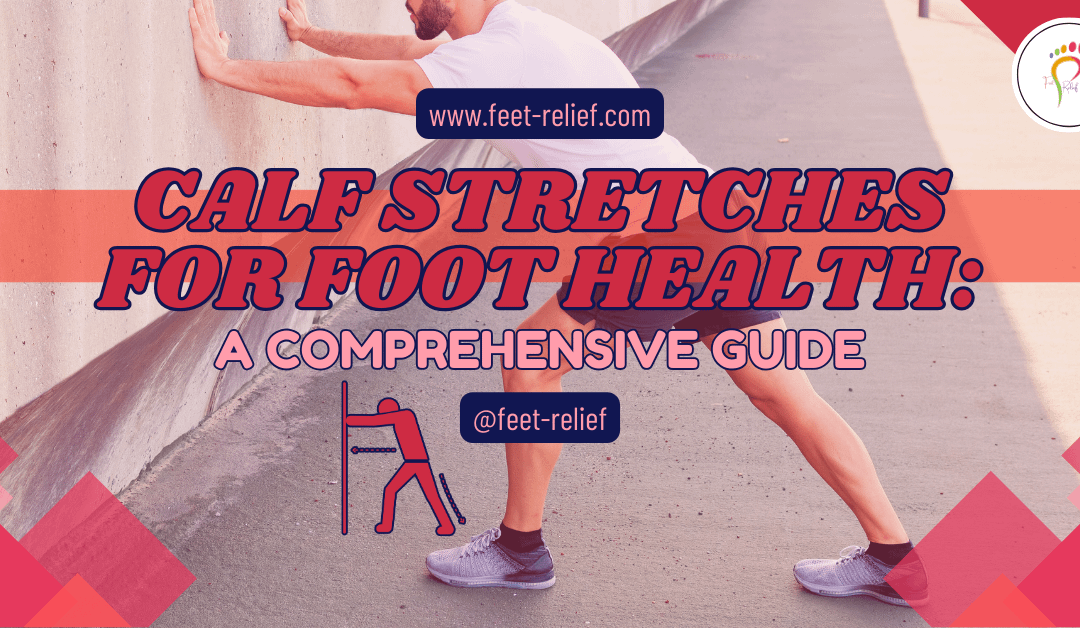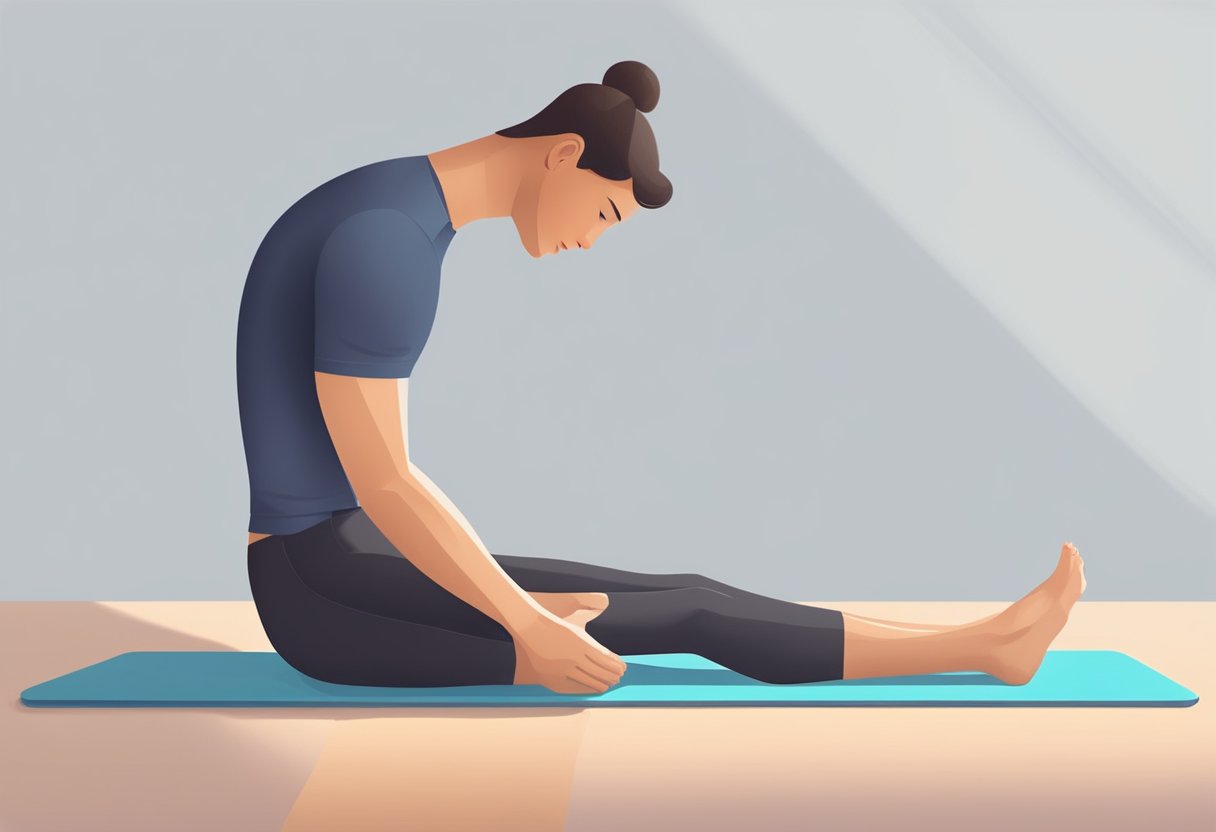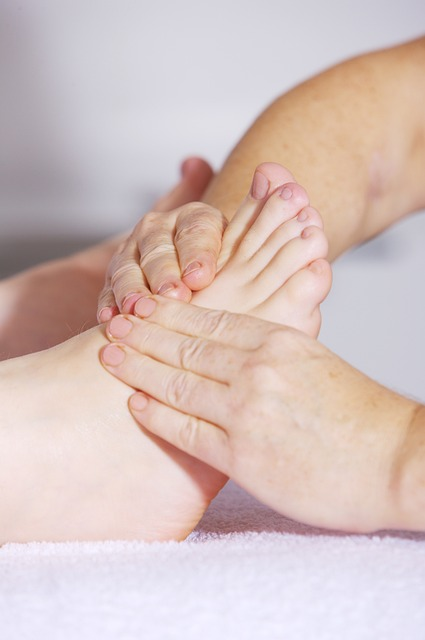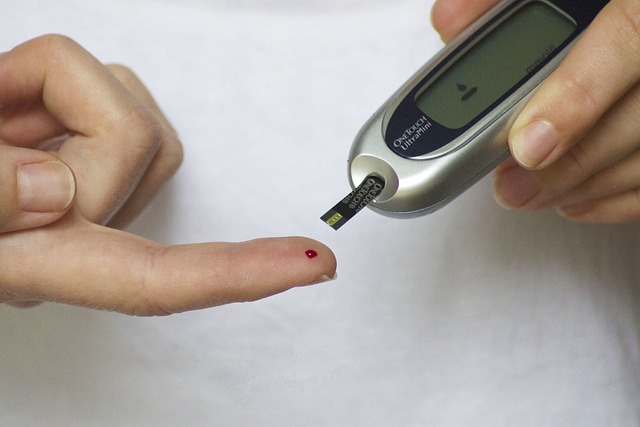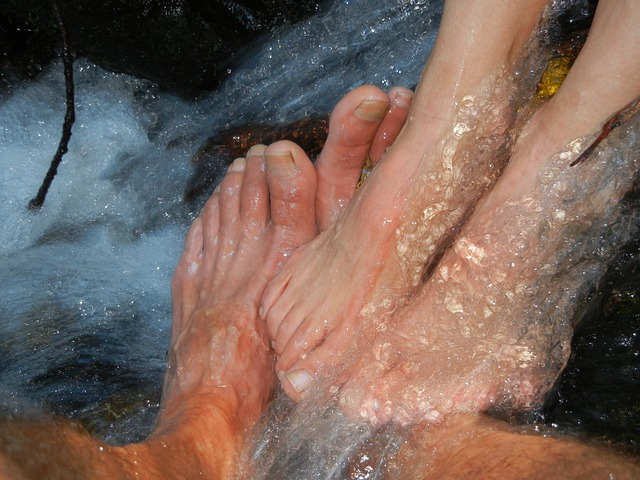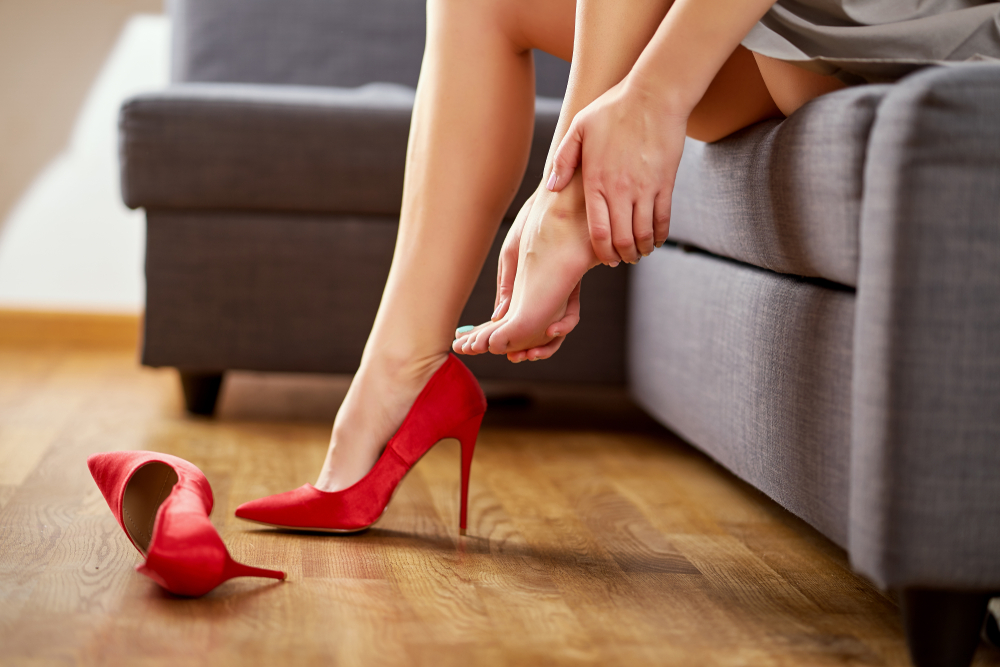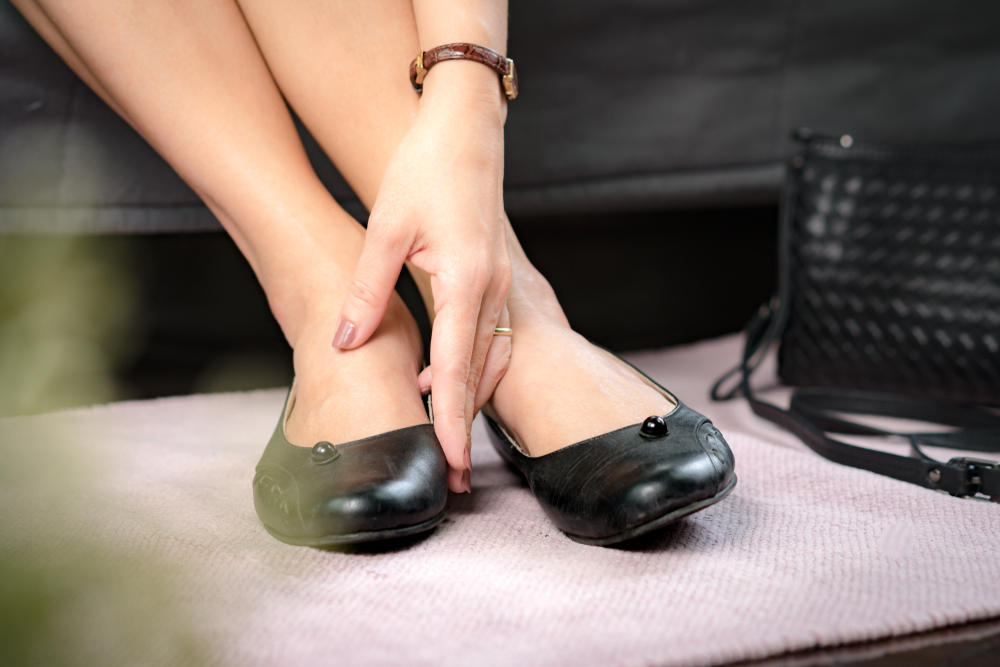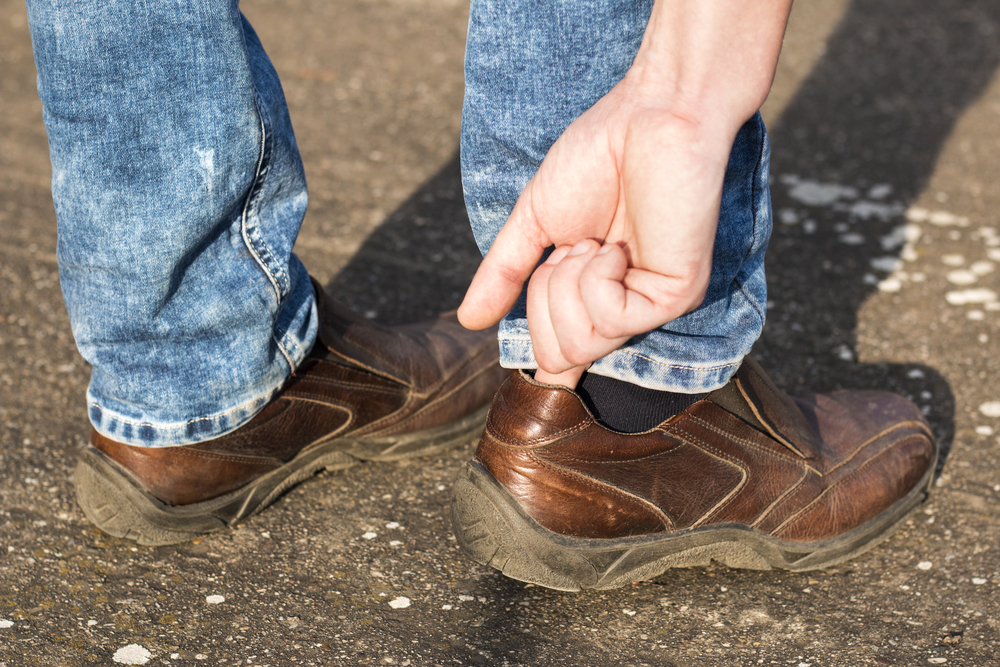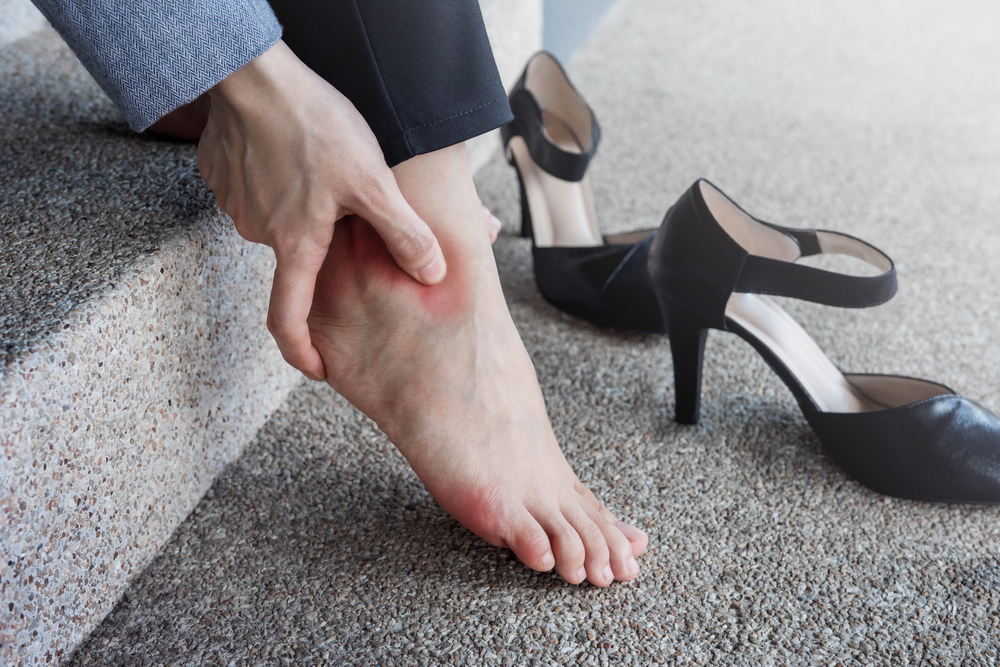
Yoga Poses for Strengthening and Stretching the Feet
Yoga Poses for Strengthening and Stretching the Feet
Yoga is a practice that not only benefits the mind and core body muscles but also targets smaller, often-neglected areas such as the feet. Incorporating yoga poses that focus on strengthening and stretching the muscles, tendons, and ligaments in the feet can enhance overall foot health, reducing the risk of injuries and improving balance and stability. Understanding the complex anatomy of the foot is the first step in recognizing how yoga can contribute to stronger, more flexible feet. Feet issues? Try Yoga Poses for Strengthening and Stretching the Feet.
Before engaging in targeted foot exercises, it’s crucial to warm up adequately to prepare the body for more intensive stretching and strengthening. Just like any other part of the body, the feet need to be eased into practice to prevent strain or injury. Both basic and advanced yoga poses can be utilized to build the strength and flexibility of the feet, while restorative poses aid in releasing tension and promoting relaxation and recovery. Implementing a routine inclusive of foot-focused yoga poses can have long-lasting benefits for physical conditioning, not just for your yoga practice but for your daily activities as well.
Key Takeaways
- Yoga enhances foot health by strengthening and stretching.
- Warming up the feet is essential before intensive yoga poses.
- A routine including foot yoga can improve daily physical function.
Understanding Foot Anatomy and the Importance of Strength and Flexibility
Your feet are a complex structure designed to provide support, balance, and mobility. They consist of 26 bones, over 30 joints, and more than 100 muscles, tendons, and ligaments. This intricate design allows your feet to bear the weight of your entire body. To maintain foot health, both strength and flexibility are vital.
Strength is crucial for:
- Supporting arches
- Stabilizing ankles
- Propelling you forward
To develop strength in your feet, incorporate yoga poses that require you to balance on one foot, like the Tree Pose, or that involve spreading and lifting your toes.
Flexibility helps with:
- Preventing injuries
- Ensuring proper alignment
- Facilitating a full range of motion
Stretching exercises and yoga poses like toe separators can improve your feet’s flexibility.
Remember, your feet are the foundation for all standing yoga postures. Maintaining their strength and flexibility is not just critical for your yoga practice but also for your overall well-being. Regularly including foot-specific yoga sequences into your routine can significantly enhance the stability and mobility of your feet.
Essential Warm-Up Exercises Before Practicing Yoga
Before diving into your Yoga Poses for Strengthening and Stretching the Feet, it’s crucial to prepare your body to prevent injury and to enhance your overall experience. Start with a warm-up routine focusing on mobility and gentle stretching to get the blood flowing to your muscles and joints.
- Child’s Pose (Balasana): Begin on all fours, then lower your hips back to your heels, and stretch your arms forward. This pose relaxes your lower back and stretches the feet.
- Mountain Pose (Tadasana): Stand with your feet together, toes spread wide. Feel the balance and grounding through your feet, which will form the foundation for your practice.
For your feet, in particular, perform these targeted exercises:
- Toe Stretch:
- Sit with your knees bent and toes curled under.
- Gently press into the toes to stretch the foot’s underside.
- Ankle Rolls:
- Lift one foot, roll the ankle clockwise for a few breaths, then switch to counterclockwise.
- Repeat with the other foot.
Remember to take slow, deep breaths and allow your body to ease into each movement. Aim for about 5-10 repetitions of each ankle roll per foot. Being mindful of these details will set a positive tone for your session and could greatly improve your focus on foot strengthening and stretching during your yoga practice.
Basic Yoga Poses for Foot Strengthening
When practicing yoga, your feet form the foundation of many postures, making foot strength crucial for balance and stability. Here are some basic poses aimed at improving the strength of your feet:
- Mountain Pose (Tadasana): This pose may seem simple, but it’s an effective way to build a connection with the ground. Ground down through the soles of your feet, evenly distributing your weight and engaging the muscles in your legs and feet. This foundational stance sets the tone for foot strength.
- Downward Facing Dog (Adho Mukha Svanasana): This well-known pose not only stretches your hamstrings and back but also strengthens your feet as you press through your heels, aiming to reach the mat.
- Warrior Pose (Virabhadrasana): All variations of the Warrior Pose require balance and strength from the feet. Focus on stabilizing yourself through the foot of your front leg, with your weight evenly spread across the heel and balls of the foot.
- Toe Squat: From kneeling, tuck your toes and sit back on your heels. Your body weight creates resistance, helping to strengthen your toes and the arches of your feet.
- Thunderbolt Pose (Vajrasana): By sitting back on your heels with the tops of your feet stretched out on the floor, you engage and reinforce your foot muscles, especially if maintaining the pose for several breaths.
Incorporate these poses into your yoga practice regularly to build and maintain foot strength. Remember, balance and precision in these poses can help improve overall foot health and support your yoga journey.
Advanced Yoga Poses for Enhancing Foot Strength
To increase strength in your feet, practicing certain advanced yoga poses can be highly beneficial. Given the complex structure of the foot, which includes bones, muscles, and ligaments, these poses aid in improving both flexibility and stability, which are vital for balance and overall foot health.
Vasisthasana (Side Plank Pose): This pose requires you to balance on one arm and the outside of one foot, helping to strengthen the muscles along the side of the foot and ankle.
- Begin in a traditional plank position.
- Shift your weight onto your right hand and outer right foot.
- Stack your left foot on top of the right with your legs straight.
- Extend your left arm up towards the sky.
Natarajasana (Dancer’s Pose): A test of balance, this pose encourages concentration and strengthens the small muscles in your feet.
- Stand on your right foot, bend your left knee and grab the inside of your left foot with your left hand.
- Stretch your right arm forward for balance, as you push your left foot into your hand, lifting it up and back.
Padangusthasana (Big Toe Pose): This forward bend engages the toes and stretches the muscles and tendons of the feet.
- Stand upright, then hinge at the hips to fold forward.
- Catch your big toes with your index and middle fingers.
- Pull up on your toes as you press the balls of your feet down.
For descriptions of practicing these poses and additional foot-strengthening sequences, the resources provided by Yoga Journal can be invaluable. Remember, consistency is key, and careful attention to technique will ensure the best results.
Yoga Poses Focused on Foot Stretching
Practicing yoga can greatly benefit the health of your feet, which are fundamentally important for balance and alignment. To focus on stretching your feet, include these effective poses in your routine.
- Downward Facing Dog Pose: Essential for stretching the feet, especially the plantar fascia. Begin on all fours, tuck your toes, lift your hips, and press back into an inverted “V” shape. Push your heels towards the ground for a deep stretch.
- Mountain Pose: A subtle but effective foot stretcher. Stand upright with your feet together and firmly plant them on the ground. Lift your toes, spread them apart, and then press them back down to enhance the stretch in the arches.
- Thunderbolt Pose: Sit on your heels with your knees bent and hands resting on your thighs. Your toes will be stretched, and as you shift your weight back slightly, the stretch intensifies. Hold this position for a minute or more for a thorough foot stretch.
- Extended Hand to Big Toe Pose: A challenging balance that not only stretches your feet but also your legs and improves stability. Stand on one foot, hold the big toe of the other foot with your hand, and stretch the held foot forward, keeping your spine long and chest open.
Incorporating these poses into your yoga practice can lead to increased flexibility and strength in your feet. For more detailed instructions and benefits, check out the focused approaches on Yoga Journal and techniques from Well+Good. Remember to approach each pose mindfully and within your comfort level to avoid any strain or injury.
Sequences and Flows for Comprehensive Foot Workouts
To bolster your foot strength and flexibility, engage in yoga sequences designed to target the feet. By practicing these specific flows and poses, you can enhance your balance and build a robust foundation.
Yoga Poses for Strengthening and Stretching the Feet
Key Poses to Incorporate:
- Toe Spread and Squeeze: Spread your toes wide, then squeeze them together. This simple motion helps to increase control over your toe muscles.
- Heel Raises: Transitioning from flat feet to tiptoes strengthens your foot arches and calves.
Flow Sequence:
- Mountain Pose: Ground your feet. Focus on evenly distributing your weight.
- Downward-Facing Dog: Elevate your hips to stretch your feet’s soles.
- Warrior I to Warrior III: Move through these poses to challenge your balance and foot stability.
Yoga sequences for strong feet can emphasize transitions that promote foot strength, such as from standing poses to one-legged balances.
Foot-Specific Exercises:
- Foot Rolls: Use a tennis ball underfoot to massage and release tension.
- Ankle Rotations: Clockwise and counter-clockwise to improve ankle mobility.
Incorporating a combination of static poses and dynamic movements in your practice will yield the best results for foot health. Visit 10 Yoga Sequences for Strong Feet and Better Balance for guided practices and further instruction. Integrating these techniques regularly into your routine will strengthen and stretch your feet, improving your overall yoga practice.
Restorative Yoga Poses to Relieve Foot Tension
When your feet feel weary after a long day, restorative yoga can help alleviate the tension. Try these poses aimed specifically at easing your foot discomfort.
Reclining Hand-to-Big-Toe Pose
With the assistance of a yoga strap, perform Reclining Hand-to-Big-Toe Pose to stretch and relax your feet. Lie on your back and loop the strap around your foot. Straighten your leg to a comfortable position and hold for a few minutes before switching to the other foot. This pose encourages blood circulation and stretches the muscles on the soles of your feet.
- Toe Squat
Enter a kneeling position and curl your toes under, sitting back on your heels. Hold this pose for 1-2 minutes to stretch the plantar fascia and the toes. Release gently if you feel any sharp pain. - Legs Up the Wall
Position yourself with your legs extended up a wall while lying on your back. Support your lower back with a bolster or folded blanket. Remain in this pose for 5-10 minutes. The elevation helps in reducing swelling and fatigue in the feet.
Supported Bridge Pose
Place a yoga block or bolster under your sacrum in a supported bridge position, allowing your feet to rest comfortably on the mat. This pose can soothe tired feet and also release tension in the lower back.
Remember to breathe deeply and focus on the sensation of relief in your feet as you transition through these poses. Each restorative posture is designed to help decompress and bring restful awareness to your feet.
Tips for Safe Practice and Preventing Injury While Strengthening Feet
When engaging in yoga poses aimed at strengthening and stretching the feet, it’s important to practice safely to prevent injury. Here are some tips to keep in mind during your practice:
- Warm Up Properly: Before diving into foot-specific poses, ensure that your entire body is warmed up. This increases circulation to your feet, preparing them for exercise.
- Mind Your Alignment: Maintaining proper alignment is crucial. Your knees and feet should be in line, as this helps distribute your weight evenly and prevents undue stress on your feet.
- Don’t Overstretch: Pay close attention to the sensations in your feet. If you feel pain or excessive strain, ease up. It’s better to gradually build flexibility than to force your feet into positions.
- Use Props for Support: Props like yoga blocks or straps can provide additional support and help you achieve the right posture without overexertion.
- Build Strength Gradually: As with any strength training, start with simpler poses and progress to more challenging ones over time. This incremental approach develops sustainable foot strength.
- Cool Down: After your session, perform stretches to relax the muscles in your feet, like the toe squat or foot stepover, which aid in recovery.
- Stay Consistent: Regular practice yields the best results. However, listen to your body and take rest days as needed.
Remember, everyone’s body is different, and these tips are not a substitute for professional advice. If you have pre-existing conditions or feel unsure about a pose, consult with a yoga instructor or healthcare professional. Your safety is paramount in your journey towards stronger, more flexible feet.
Integrating Foot Yoga Poses into Your Daily Routine
Incorporating foot yoga into your daily regimen can enhance your balance and fortify the muscles in your feet. Start by setting aside just a few minutes each day, gradually building a routine that fits seamlessly into your lifestyle.
Morning Activation: Upon waking, before even getting out of bed, flex and point your toes. These simple motions awaken the feet and can be a gentle start to your day. Consider practicing toe separation exercises, which can improve your toe’s dexterity.
Midday Pick-me-up: Take a short break from work or activities to stretch your feet. A discreet and effective pose is the Toe Squat, which entails kneeling and then tucking your toes under, sitting back on your heels to stretch the soles and toes of your feet. Hold this toe stretch for 30 seconds to a minute for a refreshing midday revival.
- Desk Work: While sitting, roll a small ball under each foot. This can help release tension and improve circulation, especially if you spend long hours stationary.
Evening Wind-down: As part of your evening routine, integrate more restorative foot poses. The Reclined Hero Pose or Vajrasana variation can aid in stretching the tops of the feet and ankles.
| Time of Day | Yoga Pose | Duration | Benefit |
|---|---|---|---|
| Morning | Toe Flexion & Extension | 2-3 mins | Activation and Awareness |
| Midday | Toe Squat | 1-2 mins | Tension Release, Flexibility |
| Evening | Reclined Hero Pose | 3-5 mins | Stretching, Relaxation |
Remember to listen to your body and avoid overexerting your feet. With consistent practice, these yoga poses can become building blocks for healthier feet, enhanced balance, and overall well-being.
Frequently Asked Questions
Yoga Poses for Strengthening and Stretching the Feet
Yoga can significantly enhance your foot health, providing strength, flexibility, and pain relief through targeted poses and stretches. The following FAQs address common concerns and the most effective yoga practices for feet.
What are the best yoga poses to promote foot strength?
To build foot strength, you can start with poses such as Toestand, which can improve your balance and core strength, along with stability in your ankles and hips.
Which yoga exercises can help alleviate plantar fasciitis?
Yoga exercises that stretch the plantar fascia and strengthen foot muscles, like toe curls and arch lifts, can be beneficial for alleviating plantar fasciitis.
How can yoga be used to stretch and relieve foot and calf tension?
Poses like Downward-Facing Dog can stretch and relieve tension in your feet and calves. Incorporating heel lifts and ankle rotations into your practice can also promote flexibility and reduce tightness.
Can practicing foot yoga assist in reducing bunions?
While yoga cannot cure bunions, it can help manage their symptoms. Gentle stretching and strengthening exercises for your feet might improve alignment and offer bunion relief.
What are the benefits of incorporating toe stretches in a yoga routine?
Incorporating toe stretches can increase your toes’ flexibility and strengthen the muscles in your feet, which may enhance overall balance and stability in your yoga practice.
Are there specific yoga poses that target flexibility and muscle tone in the feet?
Yes, Extended Triangle Pose is one of many yoga poses that can target both flexibility and muscle tone in the feet. Various standing and balancing poses also engage the feet and contribute to stronger, more flexible muscles.
You Might Also Like
Foot Arch Pain Exercises: Effective Relief Strategies for Sore Feet

